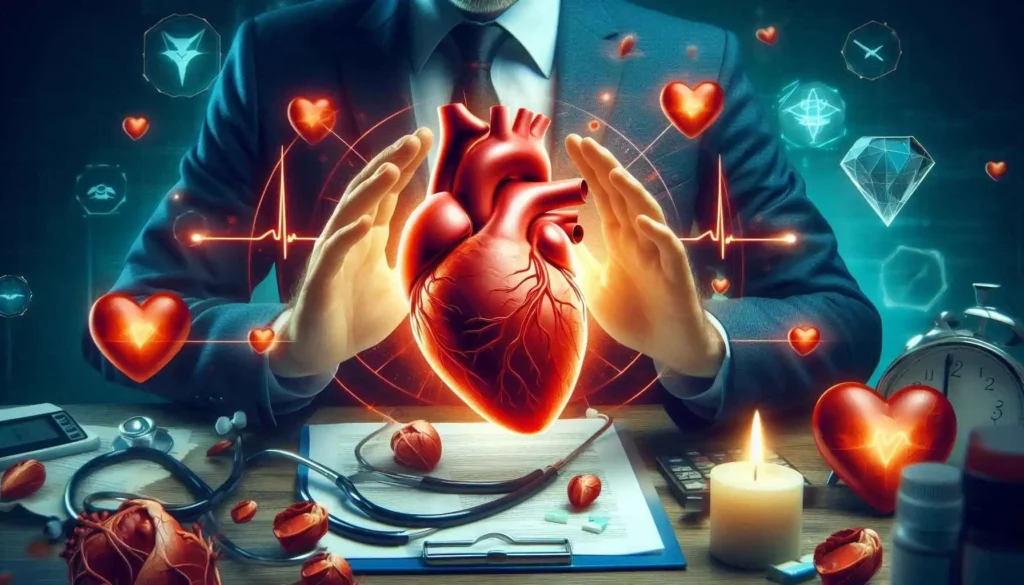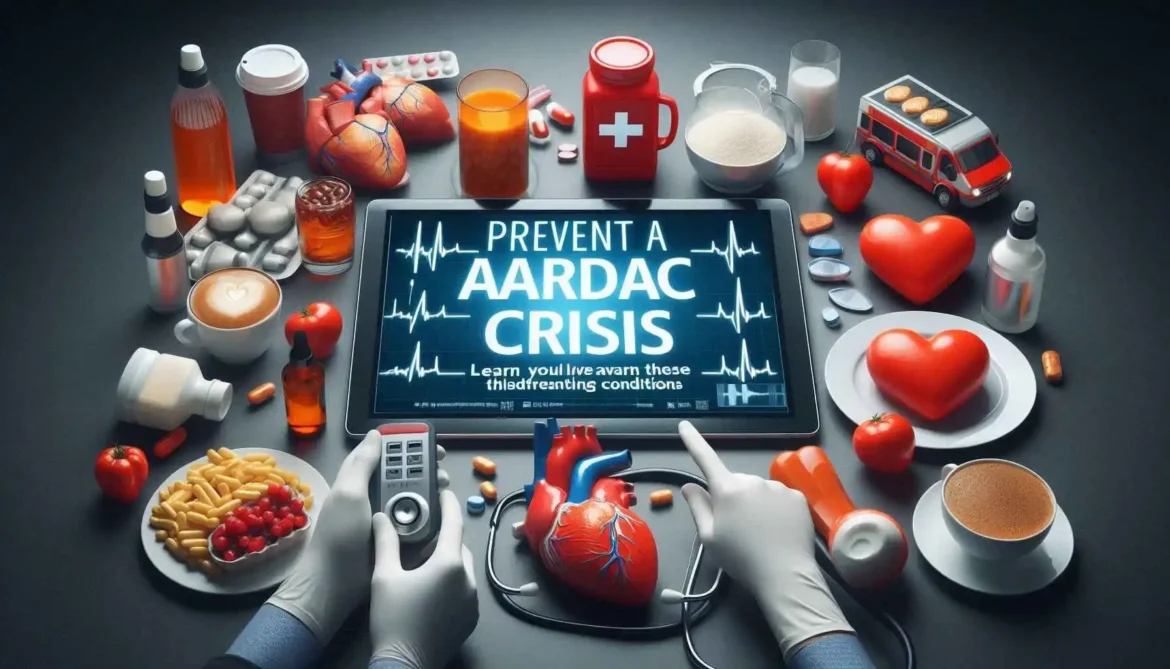
Prevent a Cardiac Crisis: Learn These Life-Threatening Conditions
In the high-stakes environment of emergency medicine and critical care, recognizing and rapidly treating certain conditions can mean the difference between life and death. Some of the most critical and time-sensitive emergencies are often colloquially grouped together due to their potential for rapid patient deterioration and, crucially, their potential for rapid reversal if identified and managed promptly. These are sometimes referred to as the “Deadly Ds”: Tension Pneumothorax, Cardiac Tamponade, Toxins, and Thrombosis. Understanding these conditions is vital for healthcare professionals and anyone interested in emergency response, because they represent scenarios where minutes truly matter.
We will explore each of these critical conditions, delving into what they are, their common causes, the signs and symptoms we look for, and the immediate treatments we employ to save lives.
“The ability to recognize critical illness rapidly and initiate effective treatment is key to improving outcomes in emergency medicine.” – A core principle in critical care.
1. Tension Pneumothorax
What it is: A tension pneumothorax is a life-threatening respiratory condition that occurs when air enters the pleural space (the area between the lung and the chest wall) during breathing but gets trapped, creating a one-way valve effect. This trapped air builds up pressure, causing the lung on the affected side to collapse completely. As the pressure continues to rise, it can push the structures in the center of the chest – the heart, trachea, and major blood vessels – towards the opposite side of the chest. This shift compromises the function of the unaffected lung and significantly impairs blood flow back to the heart.
How it happens: The one-way valve mechanism is key. Air enters the pleural space on inhalation through an injury (like a hole in the lung or chest wall) but cannot exit on exhalation. Each breath adds more air, increasing the pressure.
Common Causes We See:
- Trauma (penetrating injuries like stabs or bullet wounds, blunt trauma causing rib fractures)
- Medical procedures (central line insertion, mechanical ventilation, especially with high pressures)
- Spontaneous pneumothorax (rarely progresses to tension unless exacerbated by ventilation)
Key Symptoms We Look For:
- Sudden, severe shortness of breath
- Chest pain (often on the affected side)
- Decreased or absent breath sounds on the affected side of the chest
- Tracheal deviation (trachea shifted away from the affected side – a late and ominous sign)
- Jugular vein distension (neck veins bulging)
- Low blood pressure (hypotension)
- Rapid heart rate (tachycardia)
- Unequal chest rise
Emergency Treatment We Provide:
- Immediate recognition: Based on clinical signs. A chest X-ray or ultrasound can confirm but should not delay treatment in a crashing patient.
- Needle Decompression: This is the immediate, life-saving intervention. We rapidly insert a large-bore needle (typically 14 or 16 gauge) into the pleural space (usually in the second or third intercostal space along the midclavicular line, or the fourth or fifth space along the mid-axillary line) to allow the trapped air to escape, converting the tension pneumothorax into a simple pneumothorax.
- Chest Tube Insertion: Following needle decompression, a chest tube is surgically inserted to allow complete evacuation of air and prevent recurrence, maintaining negative pressure in the pleural space.
- Supportive Care: Administer oxygen, monitor vital signs, and manage pain.
2. Cardiac Tamponade
What it is: Cardiac tamponade is a critical condition where fluid (often blood) accumulates rapidly in the pericardial sac, the fibrous tissue surrounding the heart. This fluid buildup compresses the heart chambers, preventing them from filling adequately with blood during diastole (the relaxation phase). As a result, less blood is pumped out to the body, leading to a dramatic drop in cardiac output and oxygen delivery to organs.
How it happens: The rigid pericardial sac has limited ability to stretch. When fluid accumulates quickly (even a small amount), the pressure inside the sac rises significantly, squeezing the heart. This compression compromises the heart’s ability to expand and fill properly, directly reducing the volume of blood it can pump.
Common Causes We Encounter:
- Penetrating chest trauma (stab wounds, gunshot wounds)
- Blunt chest trauma (less common but can cause pericardial bleeding)
- Post-cardiac surgery bleeding
- Certain types of pericarditis (inflammation of the pericardium), especially if effusions develop quickly
- Cancer (metastasis to the pericardium)
- Aortic dissection extending into the pericardium
- Kidney failure (uremic pericarditis)
Key Symptoms We Recognize (Beck’s Triad is classic):
- Beck’s Triad:
- Low blood pressure (hypotension)
- Distended neck veins (jugular venous distension)
- Muffled or distant heart sounds (difficult to hear with a stethoscope)
- Shortness of breath
- Rapid heart rate (tachycardia)
- Pulsus paradoxus (an exaggerated drop in systolic blood pressure during inspiration)
- Altered mental status (due to poor brain perfusion)
- Pulseless Electrical Activity (PEA) on a cardiac monitor in severe cases
Emergency Treatment We Perform:
- Immediate Recognition: Often based on Beck’s Triad and assessment in trauma or medical patients with known risk factors. Ultrasound (FAST exam in trauma) is invaluable for rapid diagnosis at the bedside.
- Pericardiocentesis: This is the definitive emergency treatment. We insert a needle into the pericardial sac to drain the accumulated fluid, relieving the pressure on the heart. This is often done using ultrasound guidance.
- Surgical Pericardial Window: In some cases, particularly with recurrent effusion or certain causes (like trauma), surgical drainage or creating a “window” in the pericardium may be necessary for more complete or ongoing drainage.
- Supportive Care: Intravenous fluids may initially help increase filling pressure, but definitive treatment involves removing the fluid. Oxygen and monitoring are essential.
3. Toxins
What it is: In the context of emergency medicine and cardiac arrest, “Toxins” refers to the life-threatening effects of poisoning or overdose from various substances. These can be medications, illicit drugs, chemicals, venoms, etc., that cause rapid physiological collapse, often affecting the heart, lungs, or central nervous system.
How it happens: The mechanisms vary wildly depending on the specific toxin. Some depress the central nervous system leading to respiratory failure (opioids, sedatives). Others cause severe cardiac arrhythmias or pump failure (certain medications, stimulants). Some cause profound metabolic acidosis or electrolyte imbalances. The critical factor is that the substance introduces a severe, system-wide derangement that rapidly overwhelms the body’s ability to compensate.
Common Toxins We Manage (Examples):
- Opioids (causing respiratory depression, pinpoint pupils)
- Benzodiazepines (causing central nervous system depression)
- Tricyclic Antidepressants (TCAs) (causing wide complex arrhythmias, hypotension, seizures)
- Calcium Channel Blockers / Beta Blockers (causing severe bradycardia, hypotension)
- Digoxin (causing bradycardia, arrhythmias)
- Stimulants (cocaine, methamphetamine) (causing tachycardia, hypertension, arrhythmias, hyperthermia)
- Alcohols (ethanol, methanol, ethylene glycol) (causing metabolic acidosis, CNS depression)
- Carbon Monoxide (causing cellular hypoxia)
- Snake/insect venoms
Key Symptoms We Observe:
- Highly variable depending on the toxin, but often involve:
- Altered mental status (confusion, drowsiness, coma)
- Respiratory depression (slow or shallow breathing) or respiratory arrest
- Cardiac rhythm abnormalities (slow, fast, or irregular heart beat)
- Low blood pressure
- Pupillary changes (pinpoint, dilated, or unequal pupils)
- Seizures
- Specific odors (e.g., alcohol, chemical smells)
- Evidence at the scene (pill bottles, syringes, chemical containers)
Emergency Treatment We Initiate:
- Immediate Supportive Care: This is paramount.
- Ensure a patent Airway (may require intubation).
- Support Breathing (ventilation with bag-mask or mechanical ventilator).
- Support Circulation (IV fluids, vasopressors for hypotension, manage arrhythmias).
- Identify the Toxin: Gather history from patients (if conscious), family, paramedics, or bystanders. Look for clues at the scene.
- Administer Antidote (if available):
- Naloxone for opioid overdose.
- Flumazenil for benzodiazepine overdose (use with caution).
- Specific antidotes for other substances (e.g., digibind for digoxin, fomepizole for methanol/ethylene glycol).
- Decontamination/Enhanced Elimination:
- Activated charcoal (if ingested recently and appropriate for the toxin).
- Consider gastric lavage (less common now, specific indications).
- Consider hemodialysis or hemoperfusion to remove the toxin from the blood (for certain toxins).
- Manage Specific Effects: Treat arrhythmias, seizures, metabolic derangements as they occur.
4. Thrombosis



